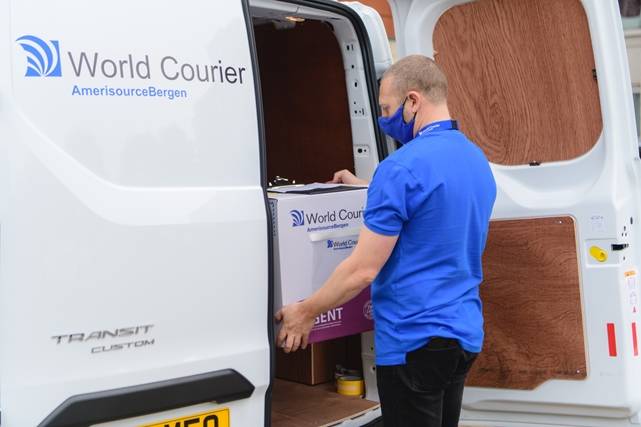Article: A Changing Landscape - New Ways of Working for Clinical Supply Chains
By World Courier
The sheer scale and pace of change brought
about by the impacts of COVID-19 are extraordinary, both for biopharma
companies and their supply chain partners. The ability to respond with speed
and adopt new business practices could be a key driver of success for trial
sponsors. In this article, we’ll explore three current industry challenges and propose
ways to overcome them.
Clearing the sample testing backlog and the imperative of sequencing
One of the biggest pain points for
investigators when it comes to logistics is sequencing. Samples that arrive or
are tested out of sequence can invalidate results. The manual workaround to
correct this a huge undertaking, especially as samples will be arriving from
various locations. Even on a good day this can be difficult. But when you add a
crisis situation to the mix, it becomes even harder.
“I look back to the ash cloud. It took
nine months to sort out the sample results, and you’re only talking about a two or three-week period in Europe. The task ahead is huge” -Stewart Black, Partnership Logistics Service Director, World Courier.
Now the backlog of samples is unparalleled. Managing
this effectively will be a marathon mission requiring a shift in approach. Central
labs will need sustained support from their logistics partners to maintain the
systems and processes. Those seeing mass samples returned from multiple
locations will have to select a delivery partner who can deal with sequencing
to ensure that databases are ready for results and reporting, to ensure trials stay
on track.
How lean is too lean?
Something that has become
apparent this year are the potential limitations of lean or just-in-time
production. Whether it’s closure of land borders or cancelled flights, the
ability to freely move products across countries has been greatly diminished.
That means having to urgently find new ways to get treatments to patients.
“We will see lean
manufacture fall by the wayside – there will be no more ‘toilet roll shortages’
in pharma. A return to late-90s abundance. It has proved that for the next few
years the world isn’t going to be as instant and available. There will be more
stock on shelves that covers 80% of risk” - World Courier
Research Participant.
Lean will still have a
place in the post-COVID-19 supply chain. But how can we adapt lean to work now?
Manufacturers will have to be flexible – for the short term at least. We are
seeing many backtracking on late-stage customization and pooling supplies, and reverting
to the old way of doing things – stocking more product than needed. This will
at least help to manage uncertainty in the coming months.
As we discussed in our recent white paper, creating a contingency plan where treatments
are held in-country or in the local region will help to sure up any gaps in the
supply chain. With backup stocks nearby it will be easier to continue with bulk
trial supply.
There has been some
speculation that this storage approach could be maintained into the medium
term. World Courier has a depot in Montevideo, Uruguay that can provide
efficient, cost-effective storage and fast distribution across the entire South
American region, as it’s located in a Free Trade Zone. If the ‘new normal’ is to
include more regional lockdowns and travel difficulties, a shift to greater
localized storage and distribution is sure to be a good thing.

Creating value through decentralized trials
Logistics accounts for a large portion of
trial costs and there is the perception direct-to-patient models increase this
overall. But even before the pandemic, direct-to-patient models were increasing,
and this has only accelerated since the logistical impact of the virus became
apparent. As well as providing more convenience to patients, we see that the
direct-to-patient model can deliver cost savings and drive long-term value.
For example, recruiting enough eligible
patients requires substantial time and money investments, with $2.28 billion
spent annually1. The cost of failing to recruit on time is also
severe, with the potential to delay the start of trials or even cancel them
altogether. By offering patients the option
to be treated at home, many of the objections and worries they usually have can
be dispelled. In a competitive landscape, such benefits will stand out and give
studies an advantage.
“The work that we’ve done so
far shows that, in site-by-site comparisons, 63% of patients are more likely to
take part in a clinical trial if home care is offered. Patients are also more
likely to stay on the study. Our retention rates run in excess of 95%. Patients
have no reason to drop off the study, because we bring the study to them,
rather than bringing the patient to the study2” - Stuart Redding, Chief Operating Officer, MRN.
This more patient-centric
approach will reduce the costs associated with recruitment, offering patients
added convenience, reduced travel spend and fewer site visits. It will also
allow more patients with certain health and mobility issues to participate in
trials. The burden on the wider healthcare system can be lowered too, by minimizing
the number of visits and volume of storage needed. For more detailed insight
into the benefits of direct-to-patient treatment, download our free e-book, “Direct-to-Patient Services for Clinical Trials and Commercial Distribution: Patient-Centric Partnerships for the 21st Century”.
Conclusion:
Adapt to thrive
The cost of being left behind during this
seismic change and disruption will be considerable. On the other hand, those
who can adapt and offer new services and operational models may find themselves
uncovering new competitive advantages.
“Patient services will become a competitive driver and
are no longer optional for pharmaceutical companies. Pharmaceutical companies
should no longer be asking whether they should offer services. Instead, they
should ask which ones to offer, and how best to offer them3” - Accenture Life Science Report.
At World Courier, we have a global network of
experts who can share learnings and put their expertise to work on your behalf.
Whether it’s choosing the right model and appropriate care partners for
direct-to-patient services, or providing the right storage solution in the
right place, our teams can help you thrive in this changing landscape.
Learn more about our services on our website or visit our COVID-19 content hub for more expert analysis and insight.
Sources
“Examination of Clinical Trial Costs and Barriers for Drug Development”, U.S. Department of Health and Human Services, July 25, 2014
Ibid.
“The Patient Is IN: Pharma’s Growing Opportunity in Patient Services”, Accenture Life Science



